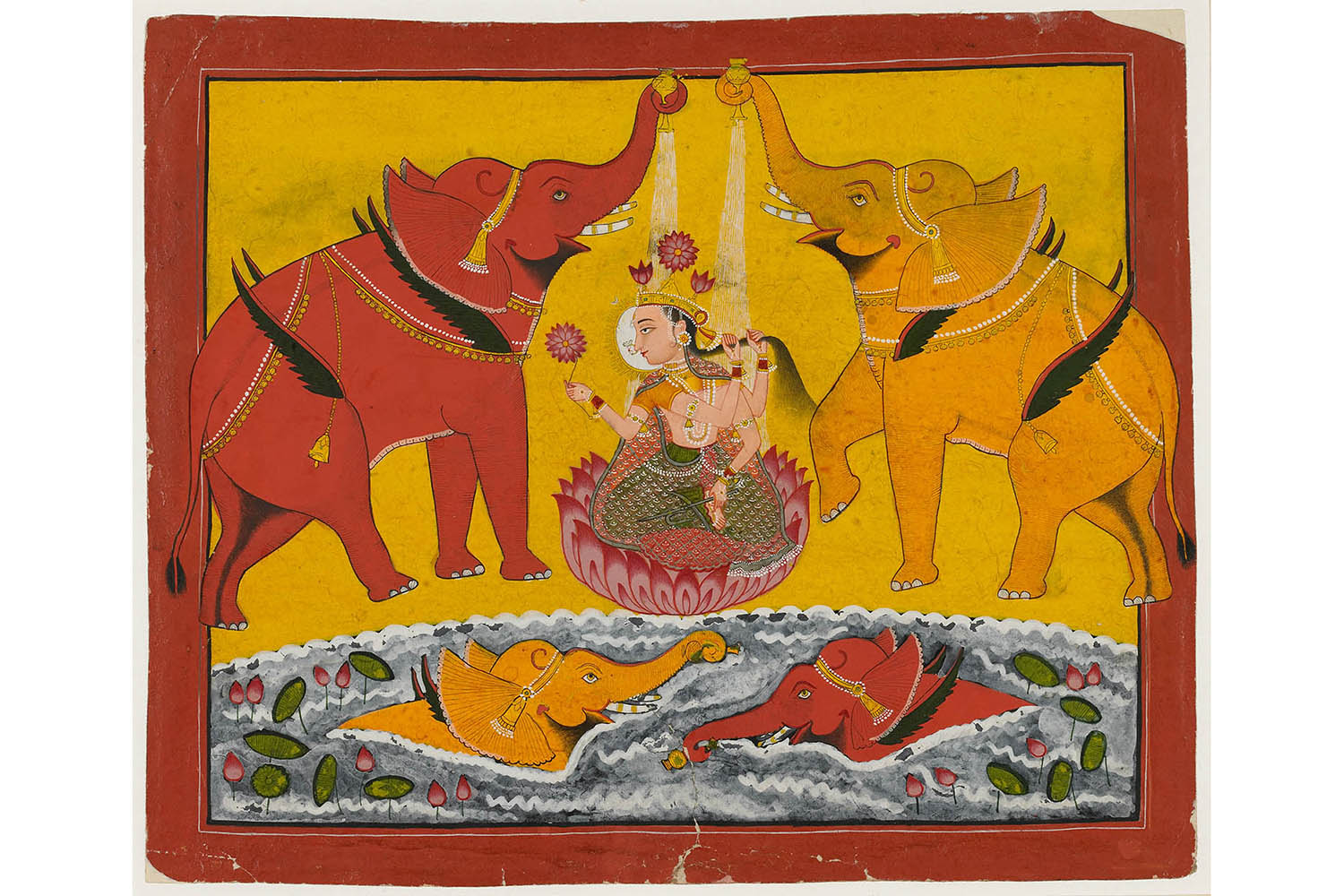Indian learning, Indian religious insights and Indian ideas are among the crucial foundations of our world. Over half the world’s population today lives in areas where Indian ideas of religion are, or once were, dominant, and where Indian gods once ruled the imaginations of men and women. Today, following the mass migration of Indians to the west after the second world war, that zone now includes large pockets of Britain.
Like ancient Greece and China, ancient India came up very early on with a set of profound answers to the big questions man asked about what the world is and how it operates; why we are here and how we should live moral lives; how man should relate with the gods and the unseen world beyond the door of our perceptions.
Yet while the ideas and mythologies of ancient Greece have always been well known in the west, and while 40 years of exhibitions and books about the Silk Road have made ancient China a relatively familiar feature of our cultural life, the same is still not true of ancient India. The processes by which the great Indian religions of Hinduism, Buddhism and Jainism came into being, and the ways in which India succeeded in diffusing its philosophies, political ideas and architectural forms out over most of Asia, not by conquest but instead by sheer cultural sophistication, these are subjects with which the west is still, today, oddly ignorant.
Hence the importance of a new exhibition at the British Museum, which opened this week, Ancient India: Living Traditions. Remarkably, it is probably the first London show dealing with the full diversity of early India’s religious and artistic life since the celebrated 1982 exhibition In the Image of Man: The Indian Perception of the Universe opened at the Hayward Gallery.
With style and imagination, as well as some superlative lighting, Ancient India tells the story of the rise of diverse Indian religious traditions. Drawing on the British Museum’s vast reserve collections, augmented by some well-chosen loans from museums in Mumbai, Delhi, Budapest, Paris and Munich, and put on in close collaboration with London’s own Hindu, Buddhist and Jain communities, Ancient India fills an important gap in our understanding.
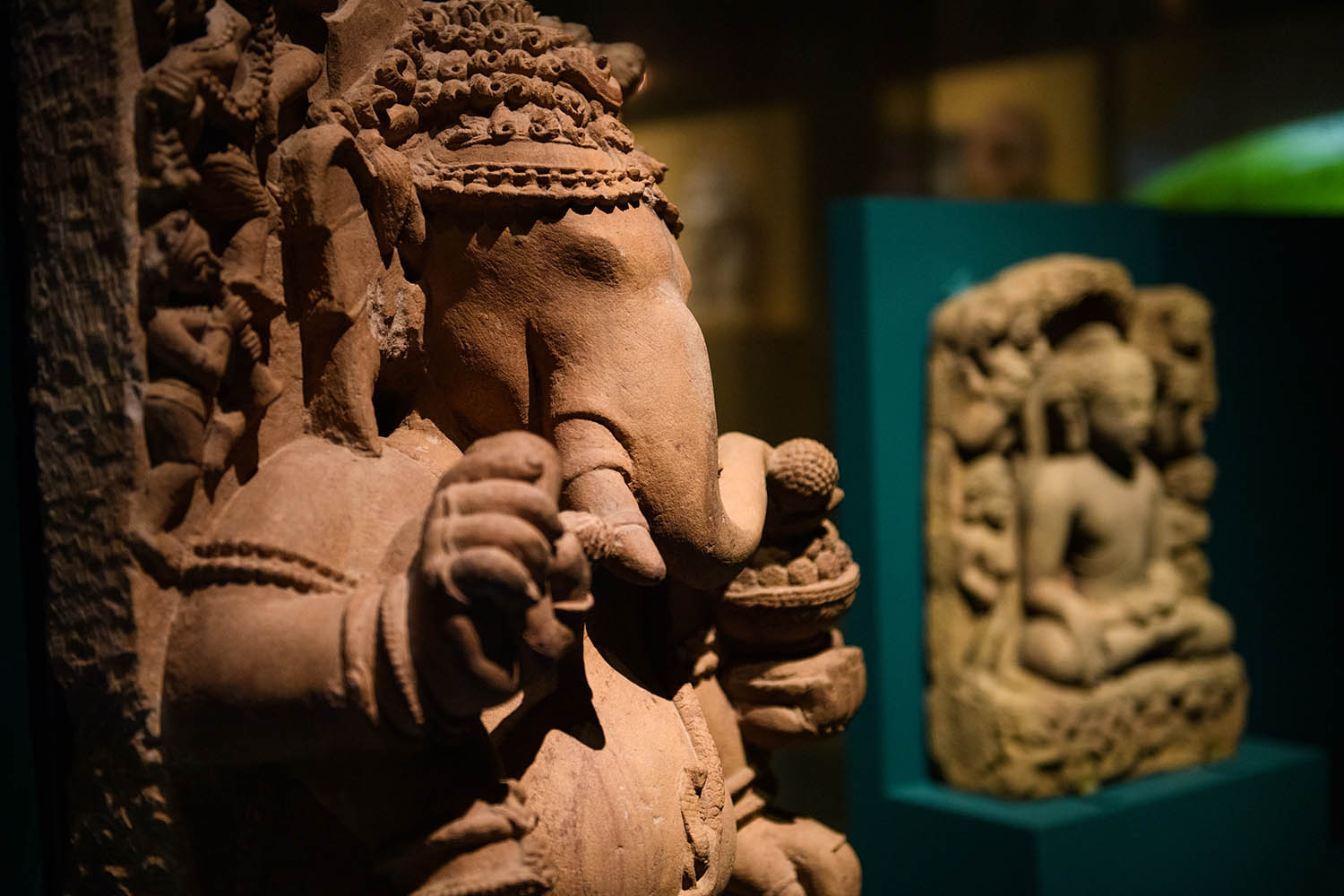
Hinduism is arguably the most ancient of all living religions. The Rigveda, India’s oldest surviving sacred text was composed around the time when the pyramids and Stonehenge were still in use. Yet Sanskrit, the language of the Vedas, is still current, and while Isis, Amun-Ra and the gods of Stonehenge have not been worshipped for more than a thousand years, Hinduism, Buddhism and Jainism are all living faiths, with more than a billion adherents around the world between them. This is prominently celebrated in this exhibition by specially commissioned videos of British practitioners talking about their faith and rituals; indeed, the exhibition was wonderfully inaugurated last week by British Hindu, Jain and Buddhist monks and brahmins blessing it with a soundscape of sacred mantas, as a succession of ancient Sanskritic chants echoed over the Great Court.
At the heart of the exhibition lies the story of how India’s different religions came into being, and how they developed, grew and spread, until the visual and artistic language with which they expressed their ideas of salvation came to be fixed. It is a complex and often surprising story, well told through a series of utterly gorgeous exhibits.
Hindu imagery is often said to begin with the seals from the Indus Valley, dating to around 2,500BC, which show a cross-legged meditating figure, crowned with horns and surrounded by beasts. This is usually assumed to be an early prototype of Shiva. About a thousand years after this comes the Rigveda, probably composed around 1,500BC; but the early Vedic priests seem to have disapproved of both images and permanent religious structures, and almost no visual material survives from the entire period. Certainly, it was not until 150BC, a full thousand years after the composition of the Vedic hymns, that we start to see the regular carving of sculptures of the Hindu gods and the construction of cut-stone temples to house them.
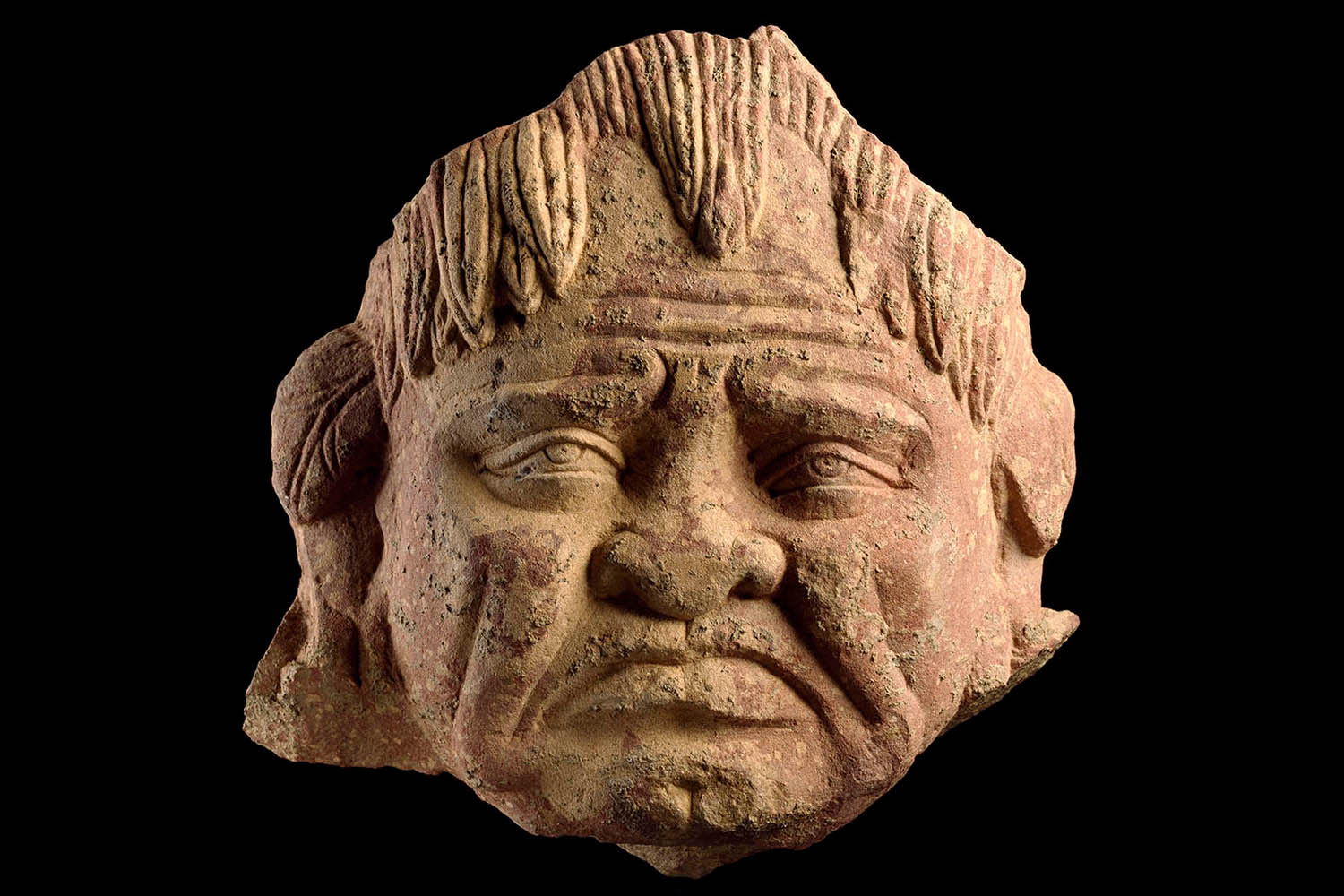
An important catalyst for this development appears to have been the popular animist nature cults, which were widely practised in early India. These cults venerated tree spirits, called yakshas and yakshis, and serpent deities, known as nagas and naginis. In and around Mathura, south of modern Delhi, a town later associated with Krishna, early cults of yaksha tree spirits began to find expression in freestanding monumental stone sculptures from the third century BC.
These yakshas are often heavily built, as if to resemble a robust heavyweight wrestler or well-fed nightclub bouncer; they carry attributes of wealth such as bags of coins as well as a beaker of strong spirits for refreshment. Other species of yakshas more closely resemble goblins, and the opening room contains some wonderful examples of grimacing figures with pointed ears and angry, mischievous expressions.
For each of these, there are yakshis, as gorgeous as the yakshas are grotesque: sensuous figures, associated with desire, love-making and childbirth. They are carved with narrow waists, full breasts and broad hips. The yakshis of Mathura, of which there are several in show, are especially beautiful: auspicious fertility figures resembling palace women with their braided hair, diaphanous drapes and bejewelled girdles. Their fecundity is expressed through the fertility of the vegetation from which they emerge: one here touches a branch, causing it to burst suddenly into bloom.
With the rise of Buddhism, these nature spirits cross faiths, where they are recruited into the service of the Buddha, the male yakshas now appearing sculpted as door guardians. Initially, the Buddha was never depicted as a human being: it was as if, having escaped with such effort from his mortal coil, it was thought disrespectful to imprison him again in human form, even in art. Instead, the Buddha was initially shown only in aniconic form through symbols such as an empty throne or a pair of footprints. It was the Mathura yakshas that are thought to form the model for the first Buddhas in human form, as well as the first images of the Jain Tīrthankaras (or “ford-makers”) the saviours of the Jain religion, whose austere images, the curators suggest, may have narrowly preceded the first human images of the Buddha.
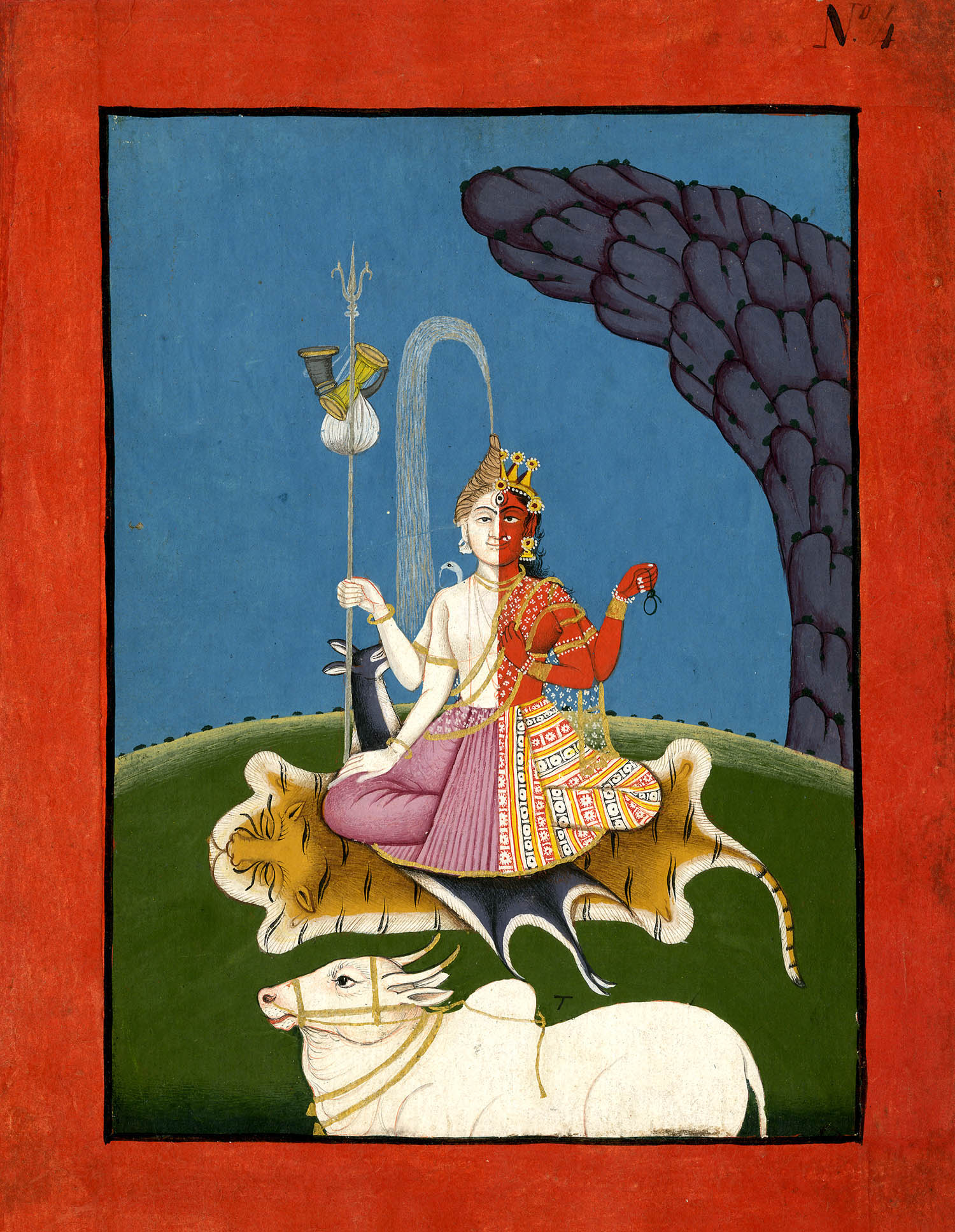
By the first century we have one of this show’s highlights: the beautiful Bimaran reliquary, ordered from a jeweller in Pushkalavati, the City of the Lotus, near modern Peshawar, around AD20. This tiny casket, less than 7cm high but made from solid gold and studded with glowing garnets, shows the oldest known examples of the Buddha in a monk’s robe, shown with Hellenistic drapery and wearing his hair in the Romano-Greek style. It is clearly influenced by classical depictions of Apollo.
But it is in Hinduism that the nature spirits went on to flourish most magnificently. Suresh Muthukumaran, one of the curators, suggests that the now familiar images of Lakshmi, the goddess of wealth, and of Balarama, the brother of Krishna, common figures in modern Hindu temples, may be derived from early images of nature spirits: some very early sculptures of Lakshmi depict her as the wife of Kubera, the pot-bellied, bling-wearing king of the yakshas, while early versions of Balarama show him here with the seven-headed snake hood of a naga raja. Balarama then spends some centuries as Vishnu’s snake incarnation, the Sheshnag, and as the plough-bearing god of agriculture, before ending up being venerated as Krishna’s brother. The same deity also has a life in the Jain pantheon where he is known as Baladeva and associated with rich harvests.
By the fifth century, when India was ruled by the imperial Guptas, the images of each religion had largely stabilised into the iconographies of the different gods and saviour figures we are familiar with today. It is at this period that we find both Buddhist and Hindu ideas beginning to travel beyond the shores of India, often carried by Gupta merchants, whose trading networks led them over the seas and mountains.
India’s influence stretched from Afghanistan in the west to Japan in the east
Northwards, Buddhism became the principal faith of what is now Pakistan and Afghanistan, resulting in the carving of the sadly dynamited Buddhas of Bamiyan. To the north-east, Buddhist monks brought the faith into Tibet and China, transforming culture and thought as they travelled, a process which in the mid-seventh century culminated in it becoming the foremost court religion under the rule of China’s only woman emperor, Wu Zetian. Today, despite all the trials of its recent history, China still has the largest numbers of Buddhists in the world.
From Chang’an, Buddhism spread even further eastwards, becoming the major religion in Korea and bringing with it a spectrum of Indian ideas ranging from martial arts to Zen meditation. These new Zen Buddhist teachings would flourish there, before spreading still further east, in the sixth century, to Japan. Here they would in time form the philosophical base for cultural expressions as diverse as the haiku, delicate ink washes of Japanese landscapes and even Samurai swordplay.
Meanwhile, Hinduism and Sanskrit were becoming deeply embedded in the court cultures of south-east Asia as the region adapted for its own use Indic gods, religions, scripts and epics. Even the place names began to be modelled on originals on the far side of the Bay of Bengal. It was not just that Indian gods had been welcomed into a region: even the landscape itself was being reimagined.
The name of the greatest of the rivers of south-east Asia, the Mekong, may derive from the Khmer pronunciation of the Ganges, Ma Ganga. By the seventh century, the apocalyptic battlefields of the Mahabharata and the great palaces of the Ramayana were being imaginatively built anew thousands of miles to the east of India, in the paddy fields of Laos and amid the volcanoes of Java.
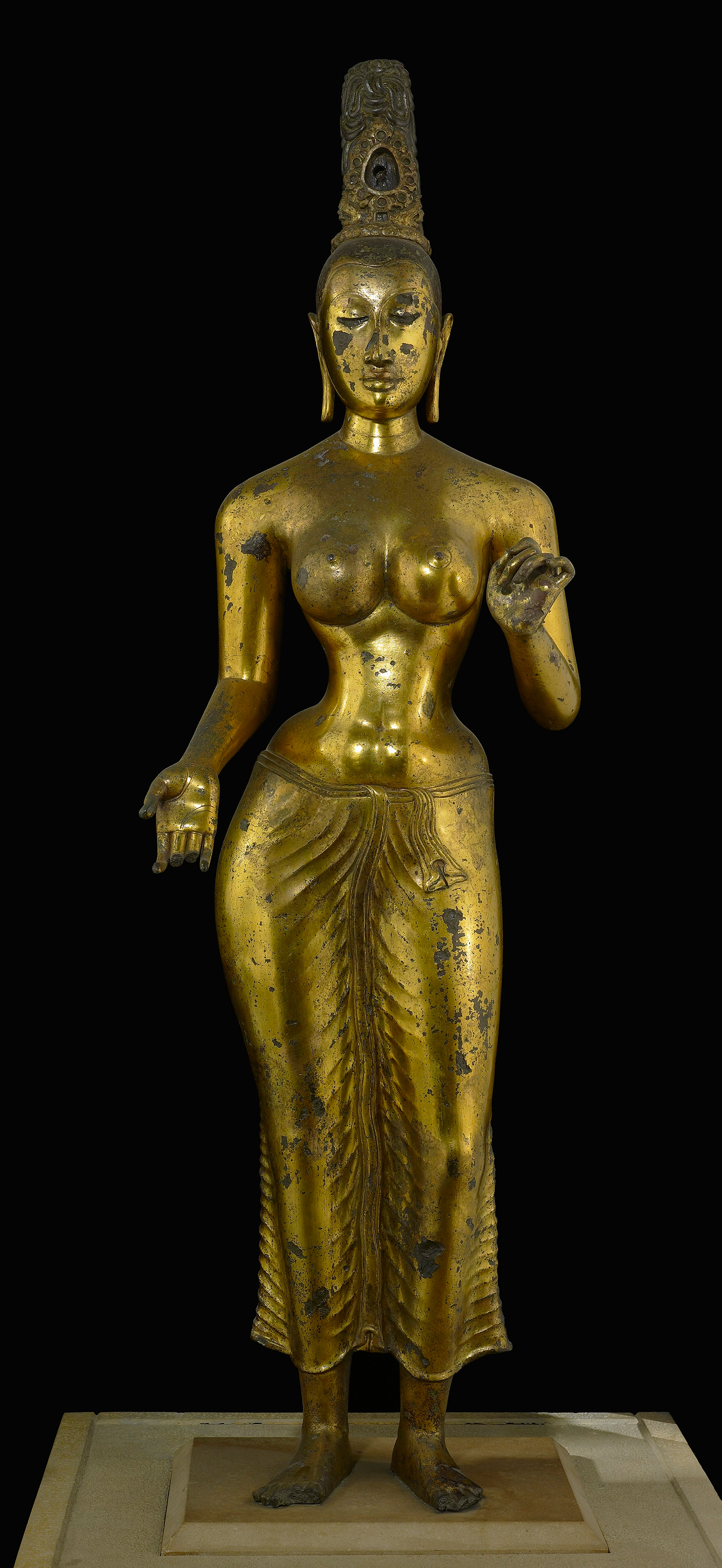
The influence of Indic gods and Indic religions, and the whole cultural and linguistic apparatus that came with them, eventually stretched over the greater part of Asia, from Afghanistan in the west to Japan in the east, from Sumatra in the south to Siberia in the north. The final part of the show brilliantly illustrates this process and demonstrates how Indic religions have dominated Asia’s religious, theological, cultural and economic discourse for more than 2,000 years.
This process culminated in the building of the most philosophically complex Buddhist structure in the world at Borobudur in Java, and the largest of all Hindu temples, not in India but at Angkor Wat in Cambodia. Appropriately, the exhibition concludes with a series of dazzling Hindu deities from south-east Asia, including an extraordinarily beautiful image of the goddess Uma from Cambodia and a wonderfully gnarled and elderly Ganesh from Java. These are some of the most beautiful treasures in the show, but they are also intriguingly distinct from their Indian models. As the Indian Nobel prize winner Rabindranath Tagore noted after visiting south-east Asia in 1927: “Everywhere I could see India, yet I could not recognise it.”
In autumn last year, the British Museum mounted a lavish Chinese-sponsored show, Silk Roads, which purported to be about the trading and cultural networks of early medieval Asia, but which omitted the role of what was the most important east-west trading hub of the time: India. This wonderful exhibition, put together by the museum’s lead south Asia curator, Sushma Jansari, more than corrects that bizarre omission. It may be smaller and less lavishly mounted than Silk Roads, but is still dazzling, and rates as one of the most thought-provoking and aesthetically satisfying shows the museum has mounted for years. It should not be missed.
Ancient India: Living Traditions is at the British Museum until 19 October
William Dalrymple’s latest book, The Golden Road: How Ancient India Transformed the World, is published next month in paperback
Photographs: Copyright of the Trustees of the British Museum, Joe Maher/Getty Images
